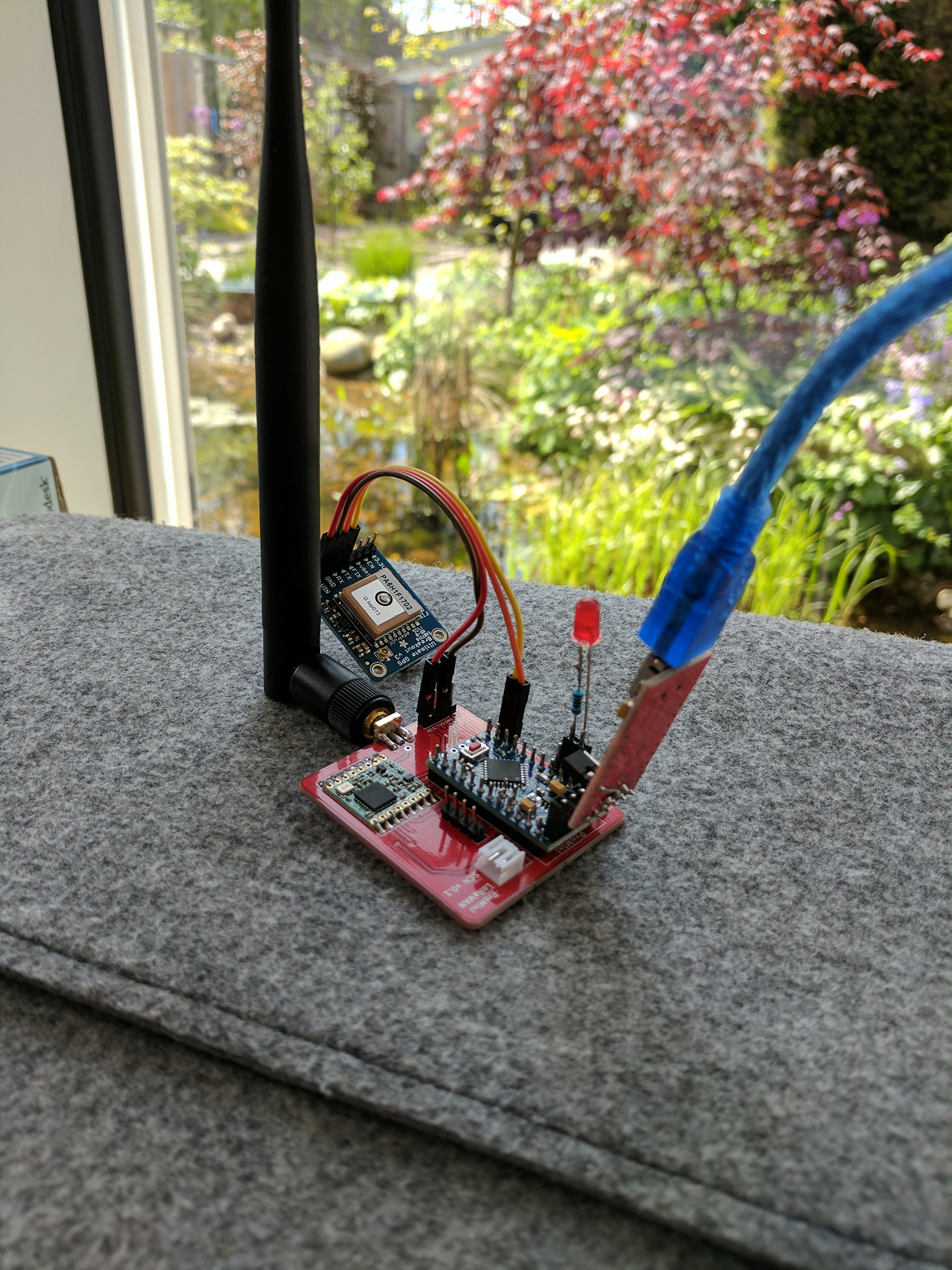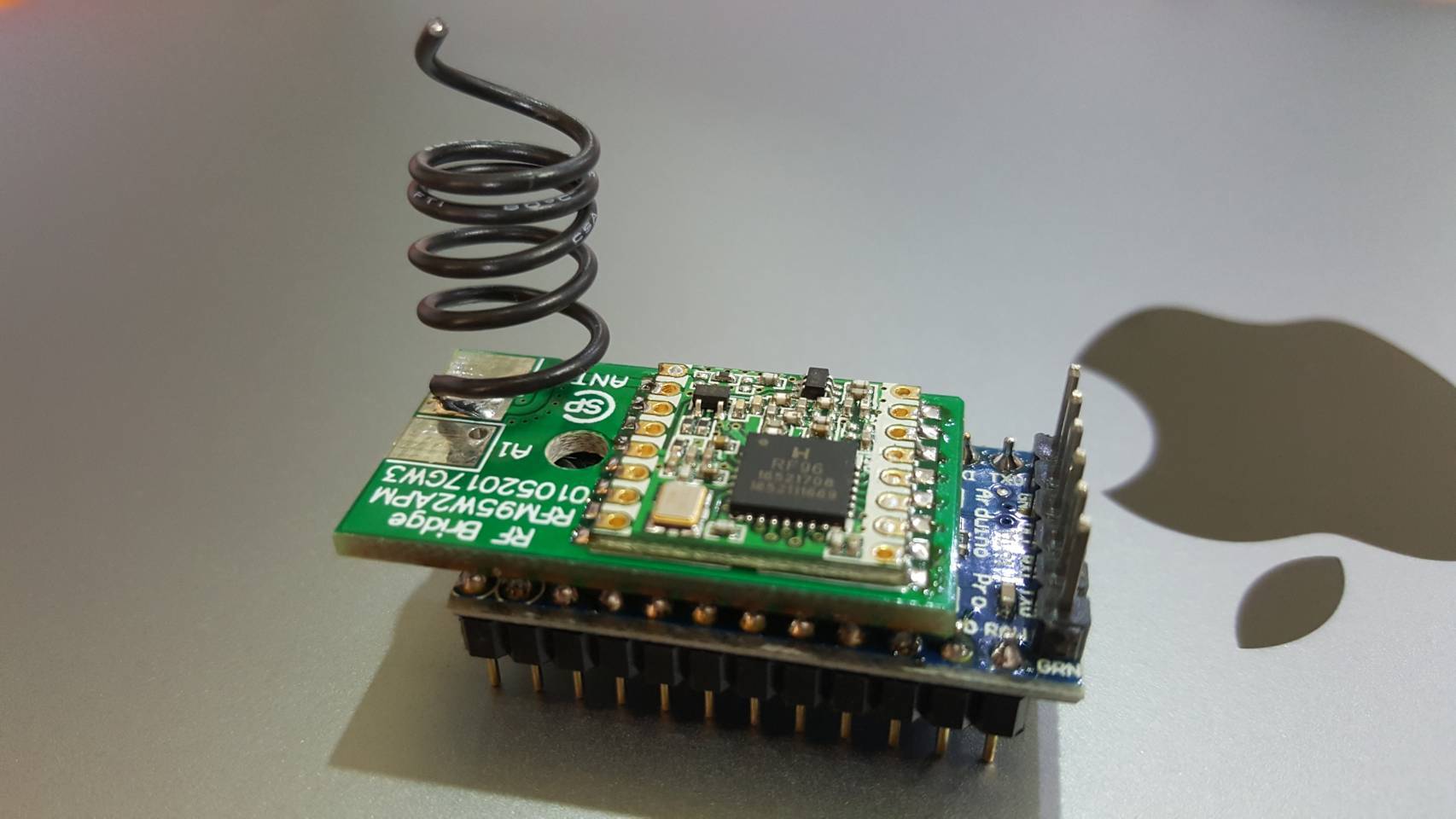The only link is the ‘order’ at DirtyPCB. There is some kickback I guess for sharing this design. Sorry about that.
Once I figure out to to package all the needed parts, I will upload it to my github repo. As for DirtyPCB kickbacks, yes they have the option but there are $0.00 kickbacks added to the board I’ve posted.
Hi Doug, thanks for sharing!! Did already three workshops (total 60 nodes, Hennef, Amsterdam and Eindhoven) with your PCB! On behalf of all the attendees: thank you!!
Just wanted to drop a “Thank you!” as well @douglarue for the design, i am building atm a TTN Mapper Node based on your PCB (and Franks Workshop):
COMBO: Promini + RFM95W.
Cool, what kind of pcb is this?
In case anyone wants to generate their own PCB based on what I’d done with the ProMini, I posted the KiCAD files on my github repo:
And thanks @galagaking1 for the ‘thanks’ and not about using the board for workshops. 
@anucha, this seems a really clever minimal size PCB “RF Bridge” solution! 
can you share more info on it?
Is it be possible to use this HW with OTAA authentication method? If it can, please point me to the howto?
Somsak
I’d be interested to know as well, have got ABP working well but having troubles getting OTAA working
I believe @galagaking1 found a somewhat dirty but very usable solution.
Hi Paul, look at https://www.thethingsnetwork.org/labs/story/creating-a-ttn-node (software section) for some tips about OTAA including the dirty fix mentioned by @TijnOnlijn
Guys,
Is dirty hack is to change lines ?
setDrJoin(DRCHG_SET, DR_SF7);
to:
setDrJoin(DRCHG_SET, DR_SF9);
@Charles: check. Did a lot of experiments, and this worked best for me (and the workshop attendees).
Unfortunately still didn’t work for me, but I think my problem has more to do with trying to get it to work with Australian frequencies, I’m sure if it had the chance, mine would join with no problems.
Had success with ABP and downlinks today
Cheers
Paul
Hi Paul, beware that the OTAA needs a return channel/receiving so proper DIO settings are needed. Try sending data to your ABP node is a good test here. Cheers Frank
@galagaking1
thanks for the answer, interesting, I’ll try this one also.
I also used LMIC_setClockError that saved me lot of time 
// LMIC init
os_init();
// Reset the MAC state. Session and pending data transfers will be discarded.
LMIC_reset();
// Enable data rate adaptation
LMIC_setAdrMode(1);
// Increase RX1 Windows by 1% in case of clock error on board (crystal shift)
// This clearly increase son OTAA Join request to works first time even with SF7
LMIC_setClockError(MAX_CLOCK_ERROR * 1 / 100);
// Join the network, sending will be
// started after the event "Joined"
LMIC_startJoining();
Yeah I have ABP working for me from the start, uplink and now downlink but still no joy with OTAA 
@Charles has mentioned before that DEV EUI MSB-LSB sequence is usually the problem when your OTAA is not working. Whatever you see on the TTN dashboard, it should be the reverse. Mine work after that.